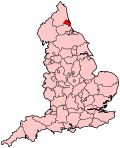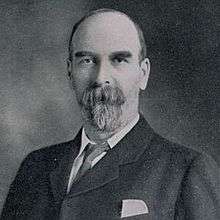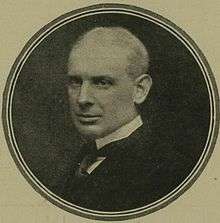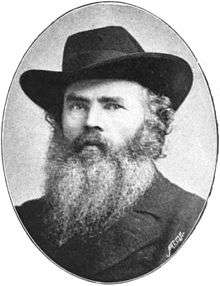Gateshead (UK Parliament constituency)
Gateshead is a constituency[n 1] represented in the House of Commons of the UK Parliament since its 2010 recreation by Ian Mearns of the Labour Party.[n 2] In every election since its recreation and before then back until 1935, there has been a different runner-up at each election.
| Gateshead | |
|---|---|
| Borough constituency for the House of Commons | |
 Boundary of Gateshead in Tyne and Wear for the 2010 general election | |
 Location of Tyne and Wear within England | |
| County | Tyne and Wear |
| Electorate | 66,066 (December 2010)[1] |
| Major settlements | Gateshead |
| Current constituency | |
| Created | 2010 |
| Member of Parliament | Ian Mearns (Labour) |
| Number of members | One |
| Created from | Gateshead East & Washington West, and Tyne Bridge |
| 1832–1950 | |
| Number of members | One |
| Type of constituency | Borough constituency |
| Created from | County Durham |
History
First creation
The previous incarnation of the seat existed from 1832 to 1950. Among famous representatives are James Melville KC who was Solicitor General for England and Wales before he died, while holding the seat, and international statesman Konni Zilliacus who assisted in creating peaceful bilateral relations during the Cold War, including though work at the United Nations.
Second creation, current creation
- Revival
The constituency was re-established to be fought from the 2010 general election.
- Results of winning party
The 2015 result made the seat the 33rd-safest of Labour's 232 seats by percentage of majority.[2] The majority increased by taking 2.6% more of the total votes cast compared with the percentage taken in the previous election (a measure known as single party swing).
Boundaries
2010–present: The Metropolitan Borough of Gateshead wards of Bridges, Chowdene, Deckham, Dunston and Teams, Felling, High Fell, Lobley Hill and Bensham, Low Fell, Saltwell, and Windy Nook and Whitehills.
The Boundary Commission's 2007-08 review led to a revived constituency of Gateshead, using parts of the abolished Gateshead East and Washington West and Tyne Bridge seats.
Under the current boundaries, the constituency is overwhelmingly White, and working-class; with 95% of its electorate identifying as White British and being in the top decile of constituencies for routine work. The area's politics are influenced by these demographics; with the exception of Low Fell, all of the wards that make up the constituency are safely Labour areas, and the constituency voted overwhelmingly to leave the European Union, like the borough as a whole.
Members of Parliament
MPs 1832–1950
| Election | Member[3] | Party | |
|---|---|---|---|
| 1832 | Cuthbert Rippon | Radical[4][5][6] | |
| 1841 | Sir William Hutt | Radical[7][8] | |
| 1859 | Liberal | ||
| 1874 | Walter James | Liberal | |
| 1893 | Sir William Allan | Liberal | |
| 1904 | John Johnson | Liberal | |
| 1910 | Sir Harold Elverston | Liberal | |
| 1918 | Herbert Surtees | Coalition Conservative | |
| 1922 | John Brotherton | Labour | |
| 1923 | John Dickie | Liberal | |
| 1924 | John Beckett | Labour | |
| 1929 | Sir James Melville | Labour | |
| 1931 | Herbert Evans | Labour | |
| 1931 | Thomas Magnay | National Liberal | |
| 1945 | Konni Zilliacus | Labour (1945–49) Labour Independent Group (1949) Independent Labour (1949–50) | |
| 1950 | constituency abolished | ||
MPs since 2010
| Election | Member[3] | Party | |
|---|---|---|---|
| 2010 | Ian Mearns | Labour | |
Elections
Elections in the 2010s
| Party | Candidate | Votes | % | ± | |
|---|---|---|---|---|---|
| Labour | Ian Mearns | 20,450 | 53.6 | -11.5 | |
| Conservative | Jane MacBean | 13,250 | 34.7 | +10.8 | |
| Liberal Democrats | Peter Maughan | 2,792 | 7.3 | +3.3 | |
| Green | Rachael Cabral | 1,653 | 4.3 | +2.9 | |
| Majority | 7,200 | 18.9 | -22.3 | ||
| Turnout | 38,145 | 59.2 | -5.4 | ||
| Labour hold | Swing | -11.2 | |||
| Party | Candidate | Votes | % | ± | |
|---|---|---|---|---|---|
| Labour | Ian Mearns | 27,426 | 65.1 | +8.4 | |
| Conservative | Lauren Hankinson | 10,076 | 23.9 | +9.4 | |
| UKIP | Mark Bell | 2,281 | 5.4 | -12.4 | |
| Liberal Democrats | Frank Hindle | 1,709 | 4.1 | -2.8 | |
| Green | Andy Redfern | 611 | 1.5 | -2.6 | |
| Majority | 17,350 | 41.2 | +3.2 | ||
| Turnout | 42,103 | 64.6 | +5.2 | ||
| Labour hold | Swing | -0.5 | |||
| Party | Candidate | Votes | % | ± | |
|---|---|---|---|---|---|
| Labour | Ian Mearns | 21,549 | 56.8 | +2.6 | |
| UKIP | John Tennant | 6,765 | 17.8 | +14.9 | |
| Conservative | Thomas Smith | 5,502 | 14.5 | −0.4 | |
| Liberal Democrats | Frank Hindle | 2,585 | 6.8 | −14.5 | |
| Green | Andy Redfern[11] | 1,548 | 4.1 | +3.1 | |
| Majority | 14,784 | 39.0 | +6.2 | ||
| Turnout | 37,949 | 59.4 | +1.9 | ||
| Labour hold | Swing | ||||
| Party | Candidate | Votes | % | ± | |
|---|---|---|---|---|---|
| Labour | Ian Mearns | 20,712 | 54.1 | −7.3 | |
| Liberal Democrats | Frank Hindle | 8,163 | 21.3 | +0.6 | |
| Conservative | Hazel Anderson | 5,716 | 14.9 | +4.8 | |
| BNP | Kevin Scott | 1,787 | 4.7 | +1.6 | |
| UKIP | John Tennant | 1,103 | 2.9 | −0.4 | |
| Green | Andy Redfern | 379 | 1.0 | +1.0 | |
| TUSC | Elaine Brunskill | 266 | 0.7 | +0.7 | |
| Christian | David Walton | 131 | 0.3 | +0.3 | |
| Majority | 12,549 | 32.8 | |||
| Turnout | 38,257 | 57.5 | +3.8 | ||
| Labour hold | Swing | ||||
Elections in the 1940s
| Party | Candidate | Votes | % | ± | |
|---|---|---|---|---|---|
| Labour | Konni Zilliacus | 36,736 | 67.5 | ||
| Liberal National | Thomas Magnay | 17,719 | 32.5 | ||
| Majority | 19,017 | 34.9 | |||
| Turnout | 54,455 | 76.0 | |||
| Labour gain from Liberal National | Swing | ||||
Elections in the 1930s
| Party | Candidate | Votes | % | ± | |
|---|---|---|---|---|---|
| Liberal National | Thomas Magnay | 28,772 | 52.72 | ||
| Labour | James Wilson | 25,804 | 47.28 | ||
| Majority | 2,968 | 5.44 | |||
| Turnout | 74.68 | ||||
| Liberal National hold | Swing | ||||
| Party | Candidate | Votes | % | ± | |
|---|---|---|---|---|---|
| Liberal National | Thomas Magnay | 34,764 | 60.09 | ||
| Labour | Ernest Bevin | 21,826 | 37.73 | ||
| New Party | John Stuart Barr | 1,077 | 1.86 | ||
| National Labour | John Fennell | 187 | 0.32 | ||
| Majority | 12,938 | 22.36 | |||
| Turnout | 78.32 | ||||
| Liberal National gain from Labour | Swing | ||||
Conservative candidate Charles White withdrew on 15 October 1931. Barr and Fennell also withdrew, but their names remained on the ballot paper.
| Party | Candidate | Votes | % | ± | |
|---|---|---|---|---|---|
| Labour | Herbert Evans | 22,893 | 51.6 | −1.0 | |
| Conservative | Cuthbert Headlam | 21,501 | 48.4 | +26.9 | |
| Majority | 1,392 | 3.2 | −27.9 | ||
| Turnout | 44,394 | 60.8 | −13.1 | ||
| Labour hold | Swing | ||||
Sir James Melville passed away on 1 May 1931, leading to a by-election on 8 June. The winner of the by-election, Herbert Evans, himself died on 7 October, the day parliament was dissolved for the 1931 general election.
Elections in the 1920s
| Party | Candidate | Votes | % | ± | |
|---|---|---|---|---|---|
| Labour | James Melville | 28,393 | 52.6 | +2.4 | |
| Unionist | Ian Orr-Ewing | 11,644 | 21.5 | -8.7 | |
| Liberal | John Fennell | 10,314 | 19.1 | -0.5 | |
| Independent Liberal | John Leonard Watson | 3,688 | 6.8 | n/a | |
| Majority | 16,749 | 31.1 | +11.1 | ||
| Turnout | 73.9 | -8.8 | |||
| Labour hold | Swing | +5.5 | |||
| Party | Candidate | Votes | % | ± | |
|---|---|---|---|---|---|
| Labour | John Beckett | 23,514 | 50.2 | +9.1 | |
| Unionist | Hilton Philipson | 14,178 | 30.2 | +14.0 | |
| Liberal | John Dickie | 9,185 | 19.6 | -23.1 | |
| Majority | 9,336 | 20.0 | 21.6 | ||
| Turnout | 82.7 | +9.5 | |||
| Labour gain from Liberal | Swing | -2.5 | |||
| Party | Candidate | Votes | % | ± | |
|---|---|---|---|---|---|
| Liberal | John Dickie | 17,344 | 42.7 | +17.8 | |
| Labour | John Brotherton | 16,689 | 41.1 | -2.7 | |
| Unionist | George Francis Stephen Christie | 6,592 | 16.2 | -15.1 | |
| Majority | 355 | 1.6 | 20.5 | ||
| Turnout | 73.2 | -5.2 | |||
| Liberal gain from Labour | Swing | +10.3 | |||
| Party | Candidate | Votes | % | ± | |
|---|---|---|---|---|---|
| Labour | John Brotherton | 18,795 | 43.8 | +20.0 | |
| Unionist | Herbert Surtees | 13,424 | 31.3 | -25.6 | |
| Liberal | John Dickie | 10,679 | 24.9 | +5.6 | |
| Majority | 5,371 | 12.5 | 45.6 | ||
| Turnout | 78.4 | +23.8 | |||
| Labour gain from Unionist | Swing | +22.8 | |||
Elections in the 1910s
| Party | Candidate | Votes | % | ± | |
|---|---|---|---|---|---|
| C | Unionist | Herbert Surtees | 17,215 | 56.9 | +17.9 |
| Labour | John Brotherton | 7,212 | 23.8 | +23.8 | |
| Liberal | Harold Elverston | 5,833 | 19.3 | -41.7 | |
| Majority | 10,003 | 33.1 | |||
| Turnout | 54.6 | ||||
| Unionist gain from Liberal | Swing | ||||
| C indicates candidate endorsed by the coalition government. | |||||
| Party | Candidate | Votes | % | ± | |
|---|---|---|---|---|---|
| Liberal | Harold Elverston | 8,763 | 61.0 | +20.3 | |
| Conservative | Herbert Surtees | 5,608 | 39.0 | +1.1 | |
| Majority | 3,155 | 22.0 | +19.2 | ||
| Turnout | 75.1 | ||||
| Liberal hold | Swing | ||||

| Party | Candidate | Votes | % | ± | |
|---|---|---|---|---|---|
| Liberal | Harold Elverston | 6,800 | 40.7 | +40.7 | |
| Liberal Unionist | Nicholas Grattan-Doyle | 6,323 | 37.9 | +3.2 | |
| Labour | John Johnson | 3,572 | 21.4 | -43.9 | |
| Majority | 477 | 2.8 | |||
| Turnout | 87.2 | +7.8 | |||
| Liberal hold | Swing | +42.3 | |||
Elections in the 1900s
| Party | Candidate | Votes | % | ± | |
|---|---|---|---|---|---|
| Lib-Lab | John Johnson | 9,651 | 65.3 | +11.5 | |
| Liberal Unionist | Theodore Angier | 5,126 | 34.7 | −11.5 | |
| Majority | 4,525 | 30.6 | +23.0 | ||
| Turnout | 14,777 | 79.4 | +5.1 | ||
| Registered electors | 18,614 | ||||
| Lib-Lab hold | Swing | +11.5 | |||

| Party | Candidate | Votes | % | ± | |
|---|---|---|---|---|---|
| Lib-Lab | John Johnson | 8,220 | 54.0 | +0.2 | |
| Liberal Unionist | Charles Howard | 7,015 | 46.0 | −0.2 | |
| Majority | 1,205 | 8.0 | +0.4 | ||
| Turnout | 15,235 | 84.9 | +10.5 | ||
| Registered electors | 17,951 | ||||
| Lib-Lab hold | Swing | +0.2 | |||

| Party | Candidate | Votes | % | ± | |
|---|---|---|---|---|---|
| Liberal | William Allan | 6,657 | 53.8 | +1.8 | |
| Liberal Unionist | John Sherburn | 5,711 | 46.2 | −1.8 | |
| Majority | 946 | 7.6 | +3.6 | ||
| Turnout | 12,368 | 74.3 | −7.7 | ||
| Registered electors | 16,635 | ||||
| Liberal hold | Swing | +1.8 | |||
Elections in the 1890s
| Party | Candidate | Votes | % | ± | |
|---|---|---|---|---|---|
| Liberal | William Allan | 6,137 | 52.0 | +0.6 | |
| Liberal Unionist | J. Lucas | 5,654 | 48.0 | −0.6 | |
| Majority | 483 | 4.0 | +1.2 | ||
| Turnout | 11,791 | 82.0 | +5.6 | ||
| Registered electors | 14,383 | ||||
| Liberal hold | Swing | +0.6 | |||
| Party | Candidate | Votes | % | ± | |
|---|---|---|---|---|---|
| Liberal | William Allan | 6,434 | 53.6 | +2.2 | |
| Liberal Unionist | Pandeli Ralli | 5,566 | 46.4 | −2.2 | |
| Majority | 868 | 7.2 | +4.4 | ||
| Turnout | 12,000 | 85.2 | +8.8 | ||
| Registered electors | 14,090 | ||||
| Liberal hold | Swing | +2.2 | |||
- Caused by James' succession to the peerage as Lord Northbourne.
| Party | Candidate | Votes | % | ± | |
|---|---|---|---|---|---|
| Liberal | Walter James | 5,336 | 51.4 | N/A | |
| Liberal Unionist | Pandeli Ralli | 5,043 | 48.5 | N/A | |
| Majority | 293 | 2.8 | N/A | ||
| Turnout | 10,379 | 76.4 | N/A | ||
| Registered electors | 13,581 | ||||
| Liberal hold | Swing | N/A | |||
Elections in the 1880s
| Party | Candidate | Votes | % | ± | |
|---|---|---|---|---|---|
| Liberal | Walter James | Unopposed | |||
| Liberal hold | |||||
| Party | Candidate | Votes | % | ± | |
|---|---|---|---|---|---|
| Liberal | Walter James | 5,756 | 65.6 | −12.9 | |
| Conservative | James Henry Bottomley[15] | 3,024 | 34.4 | +12.9 | |
| Majority | 2,732 | 31.2 | −25.8 | ||
| Turnout | 8,780 | 66.5 | +3.1 | ||
| Registered electors | 13,206 | ||||
| Liberal hold | Swing | −12.9 | |||
| Party | Candidate | Votes | % | ± | |
|---|---|---|---|---|---|
| Liberal | Walter James | 5,749 | 78.5 | +3.2 | |
| Conservative | Gainsford Bruce[17] | 1,570 | 21.5 | −3.2 | |
| Majority | 4,179 | 57.0 | +6.6 | ||
| Turnout | 7,319 | 63.4 | +13.0 | ||
| Registered electors | 11,551 | ||||
| Liberal hold | Swing | +3.2 | |||
Elections in the 1870s
| Party | Candidate | Votes | % | ± | |
|---|---|---|---|---|---|
| Liberal | Walter James | 4,250 | 75.1 | +11.6 | |
| Conservative | Richard Forster | 1,396 | 24.7 | N/A | |
| Independent Liberal | William Arbuthnot[19] | 12 | 0.2 | −36.3 | |
| Majority | 2,854 | 50.4 | +23.5 | ||
| Turnout | 5,658 | 57.8 | −11.2 | ||
| Registered electors | 9,782 | ||||
| Liberal hold | Swing | +24.0 | |||
- Arbuthnot retired from the race the day before polling.[20]
Elections in the 1860s
| Party | Candidate | Votes | % | ± | |
|---|---|---|---|---|---|
| Liberal | William Hutt | 2,442 | 63.5 | N/A | |
| Independent Liberal | William Arbuthnot[21] | 1,406 | 36.5 | N/A | |
| Majority | 1,036 | 26.9 | N/A | ||
| Turnout | 3,848 | 69.0 | N/A | ||
| Registered electors | 5,578 | ||||
| Liberal hold | Swing | N/A | |||
| Party | Candidate | Votes | % | ± | |
|---|---|---|---|---|---|
| Liberal | William Hutt | Unopposed | |||
| Registered electors | 1,165 | ||||
| Liberal hold | |||||
| Party | Candidate | Votes | % | ± | |
|---|---|---|---|---|---|
| Liberal | William Hutt | Unopposed | |||
| Liberal hold | |||||
- Caused by Hutt's appointment as Vice-President of the Board of Trade.
Elections in the 1850s
| Party | Candidate | Votes | % | ± | |
|---|---|---|---|---|---|
| Liberal | William Hutt | Unopposed | |||
| Registered electors | 913 | ||||
| Liberal hold | |||||
| Party | Candidate | Votes | % | ± | |
|---|---|---|---|---|---|
| Radical | William Hutt | Unopposed | |||
| Registered electors | 895 | ||||
| Radical hold | |||||
| Party | Candidate | Votes | % | ± | |
|---|---|---|---|---|---|
| Radical | William Hutt | 270 | 45.3 | N/A | |
| Conservative | Adolphus Frederick Octavius Liddell[22] | 190 | 31.9 | N/A | |
| Independent Liberal | Ralph Walters[23][24] | 136 | 22.8 | N/A | |
| Majority | 80 | 13.4 | N/A | ||
| Turnout | 596 | 83.8 | N/A | ||
| Registered electors | 711 | ||||
| Radical hold | |||||
Elections in the 1840s
| Party | Candidate | Votes | % | ± | |
|---|---|---|---|---|---|
| Radical | William Hutt | Unopposed | |||
| Registered electors | 656 | ||||
| Radical hold | |||||
| Party | Candidate | Votes | % | ± | |
|---|---|---|---|---|---|
| Radical | William Hutt | Unopposed | |||
| Registered electors | 554 | ||||
| Radical hold | |||||
Elections in the 1830s
| Party | Candidate | Votes | % | ||
|---|---|---|---|---|---|
| Radical | Cuthbert Rippon | 236 | 61.0 | ||
| Radical | John William Williamson | 151 | 39.0 | ||
| Majority | 85 | 22.0 | |||
| Turnout | 387 | 72.5 | |||
| Registered electors | 534 | ||||
| Radical hold | |||||
| Party | Candidate | Votes | % | ||
|---|---|---|---|---|---|
| Radical | Cuthbert Rippon | Unopposed | |||
| Registered electors | 506 | ||||
| Radical hold | |||||
| Party | Candidate | Votes | % | ||
|---|---|---|---|---|---|
| Radical | Cuthbert Rippon | Unopposed | |||
| Registered electors | 454 | ||||
| Radical win (new seat) | |||||
Notes and references
- Notes
- A borough constituency (for the purposes of election expenses and type of returning officer)
- As with all current constituencies, the constituency elects one Member of Parliament (MP) by the first past the post system of election at least every five years.
- References
Craig, F. W. S. (1983). British parliamentary election results 1918-1949 (3 ed.). Chichester: Parliamentary Research Services. ISBN 0-900178-06-X.
- "Electorate Figures - Boundary Commission for England". 2011 Electorate Figures. Boundary Commission for England. 4 March 2011. Archived from the original on 6 November 2010. Retrieved 13 March 2011.
- List of Labour MPs elected in 2015 by % majority UK Political.info. Retrieved 2017-01-29
- Leigh Rayment's Historical List of MPs – Constituencies beginning with "G" (part 1)
- Churton, Edward (1838). The Assembled Commons or Parliamentary Biographer: 1838. p. 194. Retrieved 5 November 2018 – via Google Books.
- English Heritage (2013). "Battersea High Street area" (PDF). University College London. p. 34. Retrieved 5 November 2018.
- Coohill, Joseph (17 October 2011). "Chapter 5. Appropriation and the Formation of the Parliamentary Liberal Party". Parliamentary History. 30 (s2): 113–130. doi:10.1111/j.1750-0206.2011.00259.x.
- Quinault, Roland; Swift, Roger; Windscheffel, Ruth Clayton, eds. (2016). "Gladstone and the Suppression of the Slave Trade". William Gladstone: New Studies and Perspectives. Abingdon: Routledge. p. 255. ISBN 9781315547152. Retrieved 10 May 2018 – via Google Books.
- Steele, ED (1991). "Party: Whigs and Liberals". Palmerston and Liberalism: 1855-1865. Cambridge: Cambridge University Press. pp. 84–85. ISBN 978-0-521-40045-9. Retrieved 10 May 2018 – via Google Books.
- https://www.gateshead.gov.uk/media/16571/Statement-of-Persons-Nominated-and-Notice-of-Poll-Gateshead/pdf/Statement_of_persons_Nominated_and_Notice-of-poll-Gateshead.pdf?m=637093458821430000
- "Election Data 2015". Electoral Calculus. Archived from the original on 17 October 2015. Retrieved 17 October 2015.
- "Greens name election candidates".
- "Election Data 2010". Electoral Calculus. Archived from the original on 26 July 2013. Retrieved 17 October 2015.
- Official results from Gateshead Council
- British Parliamentary Election Results 1885-1918, FWS Craig
- "Presentation to Mr J. H. Bottomley". Sheffield Daily Telegraph. 23 April 1886. p. 4. Retrieved 26 November 2017 – via British Newspaper Archive.
- Craig, F. W. S., ed. (1977). British Parliamentary Election Results 1832-1885 (e-book)
|format=requires|url=(help) (1st ed.). London: Macmillan Press. ISBN 978-1-349-02349-3. - "The General Election". Leicester Chronicle. 3 April 1880. p. 8. Retrieved 26 November 2017 – via British Newspaper Archive.
- "Gateshead". Sheffield Independent. 31 January 1874. p. 6. Retrieved 30 December 2017 – via British Newspaper Archive.
- "Gateshead". Newcastle Journal. 28 January 1874. p. 2. Retrieved 13 February 2018 – via British Newspaper Archive.
- "Gateshead - Close of the Poll". Jersey Independent and Daily Telegraph. 5 February 1874. p. 2. Retrieved 30 December 2017 – via British Newspaper Archive.
- "Gateshead". Newcastle Chronicle. 31 October 1868. pp. 3–4. Retrieved 13 February 2018 – via British Newspaper Archive.
- "Gateshead Election". Newcastle Journal. 10 July 1852. p. 5. Retrieved 10 May 2018 – via British Newspaper Archive.
- "Dinner to Ralph Walters, Esq. at Gateshead". Newcastle Journal. 31 July 1852. p. 8. Retrieved 10 May 2018 – via British Newspaper Archive.
- "Election Intelligence". Morning Chronicle. 7 July 1852. pp. 2–5. Retrieved 10 May 2018 – via British Newspaper Archive.
- List of Electors of the Borough of Gateshead Arranged as they used their Elective Franchise at the first contested election, July 27, 1837. Gateshead: W. Stephenson. 1837. Retrieved 13 April 2020 – via Google Books.
Sources
- Craig, F. W. S. (1983) [1969]. British parliamentary election results 1918-1949 (3rd ed.). Chichester: Parliamentary Research Services. ISBN 978-0-900178-06-1.